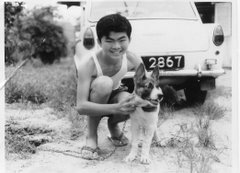Do you remember that immensely popular 60s movie 刘三姐? Besides the enchanting music (山歌), what else do you recall about this movie? For me, it is the beautiful scenery.
Recently, I was able to relish the beautiful waters and mountains seen in the movie for myself when I visited Guilin with my family. At the town called Yangshuo (阳朔), we were treated to a spectacular show titled Impression Liu San Jie. Choreographed by the famous director Zhang Yimou, the show involves some 600 performers, and is held at the confluence of the Yulong (遇龙) and Li (璃江) rivers.
Took this picture enroute back to Guilin from Yangshuo
This is during the Li River Cruise (漓江) from Guilin to Yangshuo
This is the backdrop of the Impression Liu Sanjie (刘三姐) Night Show
This is near our hotel in called Moondance Hotel in Yangshuo.
This is the river rafting that I was not allowed to join because I exceeded the age limit of 70 years.
















